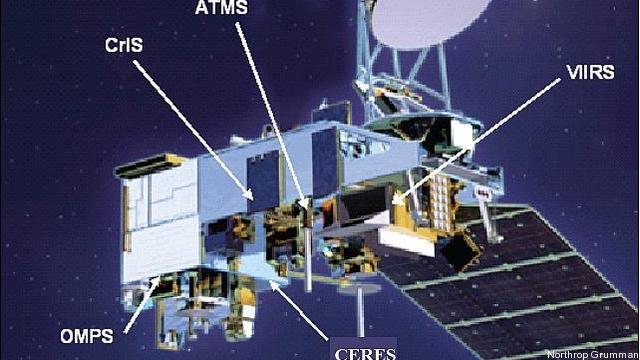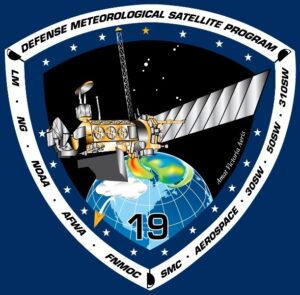HASC Strat Forces Will Push Weather Sats to NRO; Fences JSPOC Dough
Posted on
UPDATED from Hill staff briefing WASHINGTON: In a move that may spark sustained conflict between the worlds of black and white space, the House Armed Services strategic forces subcommittee wants to transfer the building of weather of satellites to the National Reconnaissance Office after years of bumbling and indecision by the Air Force, NASA and NOAA.
The proposed bill would fence half of all funding for the next-generation weather satellites “until the Secretary of the Air Force submits to the appropriate committees a plan for the Air Force to transfer, beginning with fiscal year 2018, the acquisition authority and the funding authority for certain space-based environmental monitoring missions from the Air Force to the National Reconnaissance Office (NRO),” according to the first draft of the bill released today.
“These are requirements that the Air Force hasn’t shown interest in,” a Hill staffer said bluntly at a briefing for reporters this afternoon. “The NRO has started these programs and shown competency in dealing with these kinds of things in the past. [Subcommittee chairman Rep. Mike] Rogers felt if the NRO cares more about them than the Air Force, let’s give them to the NRO.”
The bill language only affects certain space programs, but “there are concerns” about others, the staffer added.”Mr. Rogers [has] been very adamant and emphatic that he is not pleased with the way the Air Force has been dealing with things like DMSP-20,” a sidelined weather satellite, the staffer said. “The committee for the past couple of years has been fencing the Air Force’s weather satellite follow-on because of concerns about whether they’re ignoring certain requirements.”
This harkens back to the decades of weather satellite disaster begun with the requirements and building of the mega-weather satellite known as NPOESS. Since its cancellation, the military and the rest of government has found itself unable to decide how to ensure the US gets the weather data it needs.
A symptom of all this is that we currently suffer from a gap in two important weather capabilities because of the failure of DMSP-19. Neither Congress nor the Air Force, nor the Intelligence Community has made a decision about whether to launch DMSP-20, which will be dismantled in June if current plans are carried out.
Moving the weather capability to the NRO would shift a large chunk of the Air Force acquisition space budget to the Intelligence Community, even though the satellites would be moved to the blue suits once the satellites are finished,
The other big news in the Strategic Forces draft bill is a fence around 75 percent of the money for the next improvement (Increment 3) of the Joint Space Operations Center Mission System program.
“Increment 3 is specifically on battle management command and control, [so] it’s an extremely important aspect of the new space domain that we’re facing,” a Hill staffer told reporters. But despite Increment 3’s importance, “we really have not seen clear requirements or acquisition strategies from the Air Force on that program,” hence the restriction.
The money is fenced until the Air Force Secretary and the head of Strategic Command submit a report about “the acquisition strategy; requirements; funding and schedule; the strategy for use of commercially available capabilities, as appropriate, relating to such increment to rapidly address warfighter requirements, including the market research and evaluation of such commercial capabilities; and how it relates to other applicable activities and investments of the Department of Defense.”
In a nice bit of understatement, given how much the Air Force and Intelligence Community depend on the JSPOC for offensive and defensive space control, space situational awareness and controlling satellites, the subcommittee draft says it “understands that these are critical capabilities and encourages the Secretary to rapidly conduct the requirements in this section as necessary to begin increment 3.”
The draft also “recommends” the Defense Secretary “leverage commercially available capabilities, as appropriate and in accordance with the necessary security requirements.” While it doesn’t say so, I’m pretty sure this is because of something I confirmed during last week’s Space Symposium. The space data company, AGI, has done such a good job of building its commercial version of the JSPOC that in at least three recent instances, they have identified objects in space before the JSPOC did and informed the JPSOC about them. So the HASC may be intent on greater integration between AGI’s system and the JSPOC in the long run.
Finally, the subcommittee addresses one of of my favorite space issues, Operationally Responsive Space, and calls for a review of the office and its functions and uses. The language says it should take into account:
“key operationally responsive space needs with respect to the warfighter and with respect to national security; how the Office could fit into the broader resilience and space security strategy of the Department of Defense; an assessment of the potential of the Office to focus on the reconstitution capabilities with small satellites using low-cost launch vehicles and existing infrastructure; an assessment of the potential of the Office to leverage existing or planned commercial capabilities; a review of the necessary workforce specialties and acquisition authorities; a review of the funding profile; and a review of the organizational placement and reporting structure of the Office.”
Sydney Freedberg contributed to this story.
Subscribe to our newsletter
Promotions, new products and sales. Directly to your inbox.


